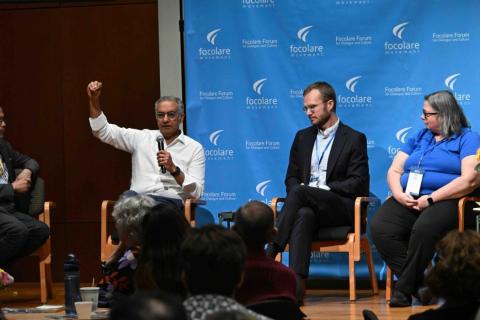
Education's Highest Aim

About the book
Since "A Nation at Risk", in 1983, the "problem" of education in the United States has occupied a prominent space in the media, in the halls of government, and in the lives of those most involved in schools. Through experiences of parents, students, teachers and administrators who have sought to live out a spirituality of communion, Education's Highest Aim examines contemporary education in the light of a way of life rooted in love of neighbor, and presents the effects when such a value is lived out across a spectrum of educational milieus.
Endorsements
Here is an educational philosophy, a pedagogy and a practice grounded in the vision of unity, in a spirituality of communion. It is one that invites students, faculty, staff, administrators and families to work cooperatively for the development of the whole person. This is an educational aim of the highest order worth working together to achieve.
… At the heart of the authors’ application … is the principle that the modern tensions of educational practice, including fragmentation, isolation, and secularism, can be reimagined through a ‘spirituality of communion’ among ‘administrators, students, teachers, counselors, coaches, and maintenance staff.’ The authors contend that Lubich’s description of ‘existential identity,’ where one ‘achieves unity with another through a process of emptying oneself to be fully present with the other,’ can provide the harmony that is missing from a society in which individual competence is the norm.
Many of the stories and discussions could be ideal for an approach to the classroom and faculty meetings, and to learning how to walk alongside one another wherever conflict arises. In both complexity and simplicity, the book is a pleasant reminder of Jesus’s summary of the law by first loving God and then loving one another. Christian administrators, teachers, and parents will find this book of particular interest.










